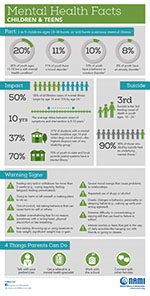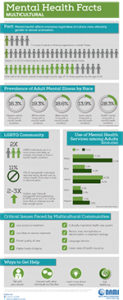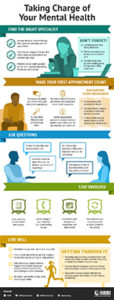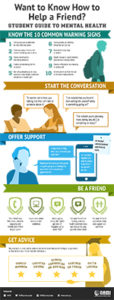About
Mental Illnesses

Mental Illness
A mental illness is a medical condition that impact a person’s thinking, feeling, mood, ability to relate to others and daily functioning. Just as diabetes is a disorder of the pancreas, mental illnesses are medical conditions that often result in a diminished capacity for coping with the ordinary demands of life.
Learn more about treatment and services that assist individuals in recovery.

FIND OUT MORE
ABOUT A SPECIFIC MENTAL ILLNESS:

FIND OUT MORE ABOUT A SPECIFIC MENTAL ILLNESS:

ABOUT MENTAL ILLNESS
Mental illness is a medical condition that imapct a person’s thinking, feeling, mood, ability to relate to others and daily functioning. Just as diabetes is a disorder of the pancreas, mental illnesses are medical conditions that often result in a diminished capacity for coping with the ordinary demands of life.
Learn more about treatment and services that assist individuals in recovery.
LEARN MORE ABOUT SPECIFIC MENTAL ILLNESSES HERE.

MENTAL HEALTH CHANNEL
ARTICLES
Sleep Guide For Anxiety via Purple.com
Take Some Time for You Today, by Karen Cousins, Mentorship Coordinator, NAMI Franklin County
Is Today a Good Day? by Karen Cousins
Vast Majority Of People Who Are Depressed Do Not Seek Help by Maanvi Singh
Pets Help Owners with Mental Health Problems by Janice Wood
Every Company Should Offer Mental Health Days by Joel L. Daniels
MENTAL HEALTH – A TO Z
Information on each mental illness is available on the NAMI National website, www.nami.org. We encourage you to explore the site and learn more!
Anxiety Disorders – a group of related conditions with unique symptoms, all including persistent, intense, and excessive fear or worry in situations that are not threatening.
- 18% of adults, and 8% of children/teens are affected by an anxiety disorder, Women are 60% more likely to be diagnosed by one or more of these related conditions,Symptoms usually present before the age of 21.
Borderline Personality Disorder is a condition characterized by difficulty regulating emotion, which leads to severe, unstable mood swings, impulsivity, instability, and insecurity.
- 1.6-5.9% of the U.S. population has this condition, 75% of those diagnosed are women, but it’s suggested that men are equally affected, but are often misdiagnosed with PTSD or depression.
Dissociative Disorders – disorders that cause involuntary escape from reality, characterized by a disconnection between thoughts, identity, consciousness, and memory.
- 2% of people experience dissociative disorders, with women being more like than men to be diagnosed, Symptoms usually develop as a response to a traumatic event.
Obsessive Compulsive Disorder – characterized by repetitive, unwanted, intrusive throughs (obsessions) and irrational, excessive urges to do certain actions (compulsions).
- Symptoms usually begin between childhood and young adulthood, with males often developing them at a younger age,Over 2% of the U.S. population is diagnosed with this condition in their lifetime.
Schizoaffective Disorder – a chronic mental health condition characterized by symptoms of schizophrenia, and symptoms of a mood disorder.
- Affects .3% of the population, Men and women develop the disorder at equal rates, but men usually develop symptoms earlier.
Anosognosia – being unaware of one’s own mental health condition or being unable to perceive one’s condition accurately.
- Affects 50% of people with schizophrenia, 40% of people with bipolar disorder, Can cause a person to avoid treatment, and combined with psychosis/mania, can result in reckless or undesirable behavior.
Psychosis – Impact on a person’s thoughts and perceptions that make it difficult for them to recognize what is real and what isn’t.
- Affects 100,000 Americans per year, and 3% of Americans of the course of their lives, Early Psychosis (of First-Episode Psychosis) rarely develops suddenly and there are usually detectable, gradual warning signs.
Suicide – The intentional taking of one’s own life.
- 90% of those who die by suicide have an underlying mental illness, Suicide is the 10th leading cause of death in the U.S., and the 2nd leading cause of death among people aged 12-24,Rates of suicide in the U.S. are increasing.
Bipolar Disorder is a chronic mental illness that causes dramatic shifts in a person’s mood, energy, and ability to think clearly.
- 2.9% of the population is diagnosed every year, with 83% of them being classified as severe,The average age of onset is 25.
Depression is a serious mood disorder which causes symptoms that affect how you feel, think, and handle daily activities, such as sleeping, eating, or working.
- 7% of American adults have experienced at least one major depressive episode in the last year,Young adults, 18-25, are 60% more likely to have depression (compared to adults 50+),Women are 70% more likely to experience depression.
Eating disorders are commonly associated with women, but men can develop them as well, 5% of Americans are affected by an eating disorder during their life, most common during the teens and early 20s.
- 1.6-5.9% of the U.S. population has this condition, 75% of those diagnosed are women, but it’s suggested that men are equally affected, but are often misdiagnosed with PTSD or depression.
Posttraumatic Stress Disorder (PTSD) – ongoing unwanted psychological symptooms brought on by a traumatic event such as military combat, assault, accident, or natural disaster.
- 3.5% of the adult population are affected by PTSD, with 37% of all diagnosed cases being classified as severe, Average age of onset is the early 20s, with symptoms usually beginning 3 months after a traumatic event.
Schizophrenia – a serious mental illness that interferes with a person’s ability to think clearly, manage emotions, make decisions, and relate to others.
- Affects 1% of Americans, Average age of onset is late teens to early 20s (men) or late 20s to early 30s (women).
- Related Conditions Glossary: Factors that can lead or contribute to the severity of mental illness.
Dual Diagnosis – when someone experiences a mental illness and a substance abuse problem simultaneously
- Affects about a third of individuals experiencing a mental illness, and half of people experiencing a severe mental illness, Males, individuals of lower socioeconomic status, military veterans, and people with more general medical illnesses are at a higher risk.
Self-Harm – hurting one’s self on purpose.
- Behavior often indicates a lack of healthy coping skills, Associated with BPD, eating disorders, anxiety, and PTSD,Occurs most often during teen and young adult years.
- Sleep Disorders – problems sleeping, including not getting enough sleep, not feeling rested, and not sleeping well. In addition to affecting sleep itself, many medical and mental health conditions can be worsened by sleep-related problems.








